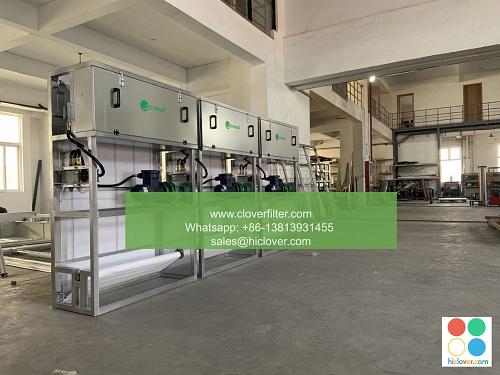Air Filter Data Analytics: Unlocking Hidden Insights

The increasing use of air filters in various industries, including HVAC, automotive, and industrial processes, has led to a significant amount of data being generated. Air filter data analytics is the process of collecting, analyzing, and interpreting this data to gain valuable insights and make informed decisions. In this article, we will explore the concept of air filter data analytics, its applications, and the benefits it offers.
What is Air Filter Data Analytics?
Air filter data analytics involves the use of advanced analytical techniques, such as Machine Learning (ML) and Internet of Things (IoT), to analyze data generated by air filters. This data can include information on filter performance, airflow rates, pressure drops, and other parameters. By analyzing this data, businesses and organizations can gain a deeper understanding of their air filtration systems and make data-driven decisions to optimize their performance.
Application Areas of Air Filter Data Analytics
Air filter data analytics has a wide range of applications across various industries, including:
* Indoor Air Quality (IAQ) monitoring: Air filter data analytics can be used to monitor and improve indoor air quality in buildings, hospitals, and other enclosed spaces.
* HVAC system optimization: By analyzing data from air filters, HVAC systems can be optimized to improve energy efficiency, reduce maintenance costs, and extend equipment lifespan.
* Automotive air filter monitoring: Air filter data analytics can be used to monitor and optimize air filter performance in vehicles, improving fuel efficiency and reducing emissions.
* Industrial process control: Air filter data analytics can be used to monitor and control air filtration systems in industrial processes, such as chemical processing, pharmaceuticals, and food processing.
Benefits of Air Filter Data Analytics
The benefits of air filter data analytics are numerous and can be summarized as follows:
* Improved energy efficiency: By optimizing air filter performance, businesses and organizations can reduce energy consumption and lower their carbon footprint.
* Extended equipment lifespan: Air filter data analytics can help identify potential issues before they become major problems, reducing downtime and extending equipment lifespan.
* Enhanced indoor air quality: By monitoring and optimizing air filter performance, businesses and organizations can improve indoor air quality, creating a healthier and more comfortable environment for occupants.
* Cost savings: Air filter data analytics can help reduce maintenance costs, energy consumption, and other expenses, resulting in significant cost savings.
Key Technologies Used in Air Filter Data Analytics
Several key technologies are used in air filter data analytics, including:
* IoT sensors: IoT sensors are used to collect data from air filters, including temperature, humidity, and pressure drop.
* Cloud computing: Cloud computing is used to store and analyze large amounts of data generated by air filters.
* Machine learning algorithms: Machine learning algorithms are used to analyze data and identify patterns, trends, and anomalies.
* Data visualization tools: Data visualization tools are used to present complex data in a simple and intuitive format, making it easier to understand and interpret.
Conclusion
Air filter data analytics is a powerful tool that can help businesses and organizations unlock hidden insights and make data-driven decisions. By leveraging advanced analytical techniques and key technologies, such as ML, IoT, and cloud computing, air filter data analytics can be used to optimize air filter performance, improve energy efficiency, and enhance indoor air quality. As the use of air filters continues to grow, the importance of air filter data analytics will only continue to increase, making it a vital component of any air filtration system. You haven’t provided a question or topic for me to address. Please provide more context or information so I can assist you effectively. What would you like to talk about or ask?

